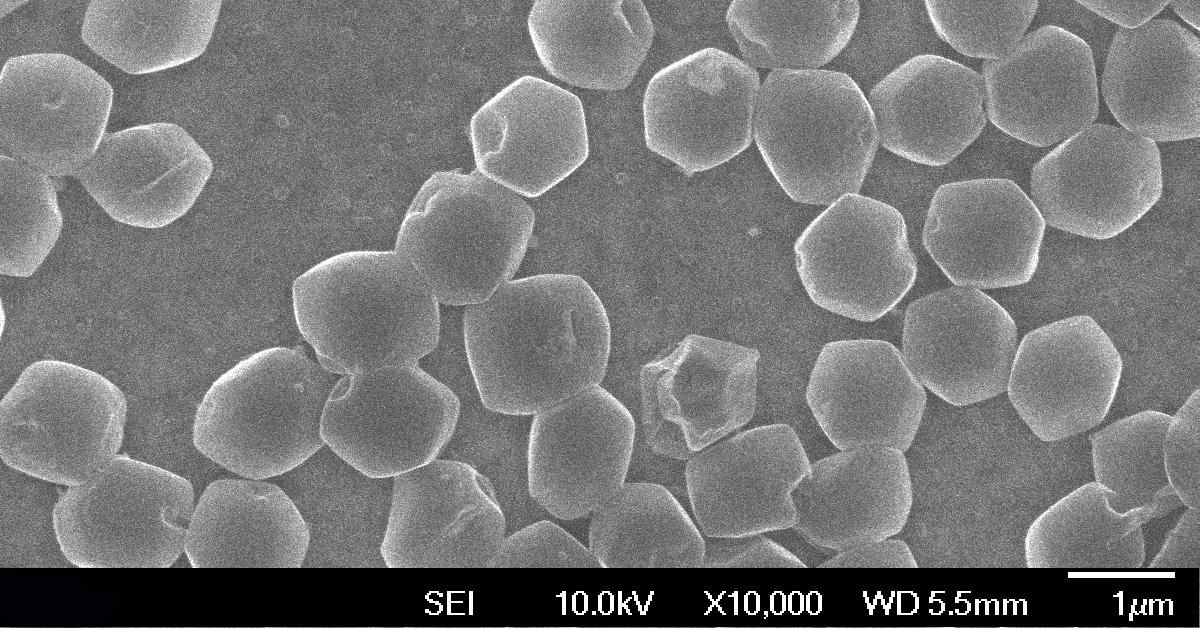Experts recently reported new progress toward lithium-metal batteries that charge quickly—as quickly as an hour—in a new study published in Nature Energy. This rapid charging is made possible by lithium metal crystals that can be seeded and grown—fast and uniform—on an unexpected surface.

In this SEM image, large, uniform crystals of lithium metal grow on a surprising surface. Image Credit: Zhaohui Wu and Zeyu Hui/UC San Diego
The tactic is to grow crystals on a surface that lithium does not “like.” Dense layers of uniform lithium metal grow from these seed crystals. Uniform layers of lithium metal are of specific importance to battery researchers since they lack dendrites, which degrade battery performance. The formation of these dendrites in battery anodes has long been a stumbling block in the development of fast-charging ultra-energy-dense lithium-metal batteries.
This novel strategy, guided by engineers at the University of California, San Diego, facilitates the charging of lithium-metal batteries in about an hour. UC San Diego engineers, in partnership with UC Irvine imaging researchers, published this breakthrough in Nature Energy on February 9th, 2023.
The scientists replaced the prevalent copper surfaces on the negative side (the anode) of lithium-metal batteries with a lithiophobic nanocomposite surface made of lithium fluoride (LiF) and iron to grow lithium metal crystals (Fe).
Lithium crystal seeds developed on this lithiophobic surface during lithium deposition, and from these seeds grew dense lithium layers—even at high charging rates. As a result, long-cycle-life lithium-metal batteries that charge quickly were created.
The special nanocomposite surface is the discovery. We challenged the traditional notion of what kind of surface is needed to grow lithium crystals. The prevailing wisdom is that lithium grows better on surfaces that it likes, surfaces that are lithiophilic.
Ping Liu, Study Senior Author and Professor, Nanoengineering, University of California, San Diego
Ping Liu adds, “In this work, we show that is not always true. The substrate we use does not like lithium. However, it provides abundant nucleation sites along with fast surface lithium movement. These two factors lead to the growth of these beautiful crystals. This is a nice example of a scientific insight solving a technical problem.”
The new breakthrough headed by UC San Diego nanoengineers could remove a significant barrier to the prevalent use of energy-dense lithium-metal batteries for applications such as electric vehicles (EVs) and portable electronics. Because of their high charge density, lithium-metal batteries have great potential for EVs and portable electronics.
However, today’s lithium-metal batteries should be charged relatively slowly to maintain battery performance and avoid safety concerns. Slow charging is required to reduce the formation of battery-performance-wrecking lithium dendrites, which form when lithium ions combine with electrons to form lithium crystals on the anode side of the battery. As the battery charges, lithium crystals form, and as the battery discharges, the lithium crystals dissolve.
Journal Reference
Wu, Z., et al. (2023) Growing single-crystalline seeds on lithiophobic substrates to enable fast-charging lithium-metal batteries. Nature Energy. doi.org/10.1038/s41560-023-01202-1.